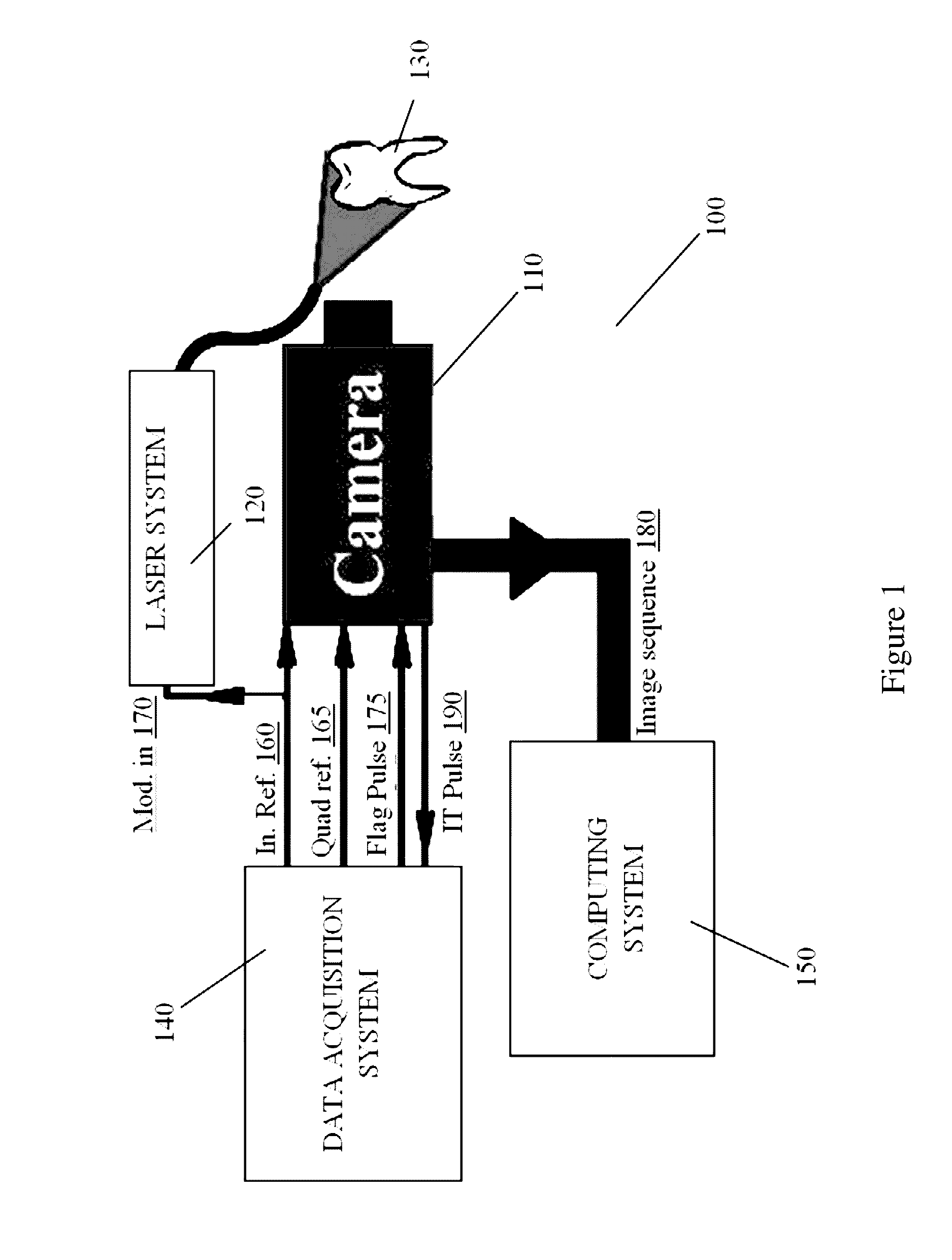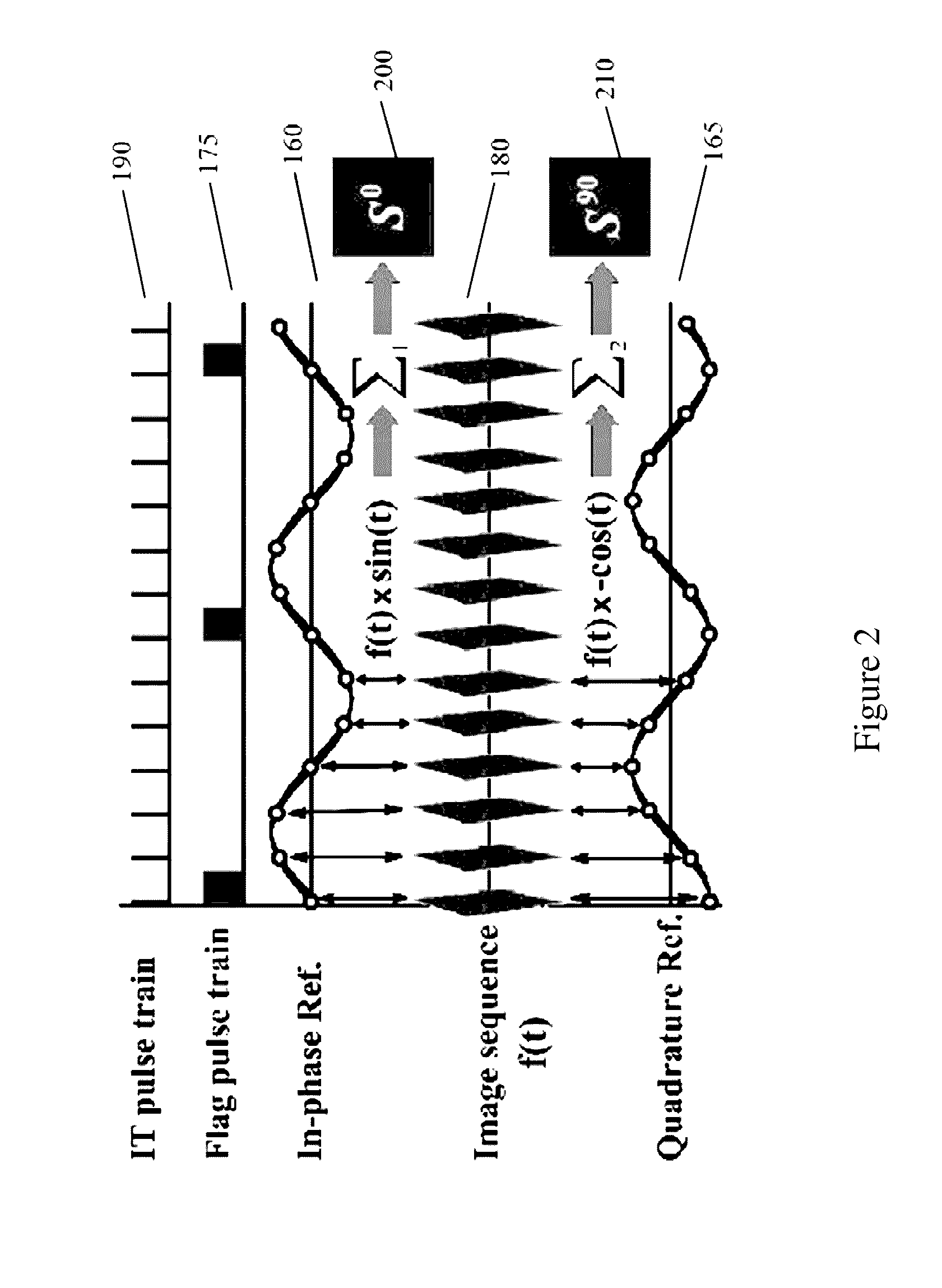Systems and methods for thermophotonic dynamic imaging
a dynamic imaging and thermophotonic technology, applied in the field of systems and methods of thermophotonic dynamic imaging, can solve the problems of significant limitations on depth and/or spatial resolution, unable to meet specific applications, and often failing in applications that require higher sensitivity, etc., and achieve the effect of high signal-to-noise ratio
- Summary
- Abstract
- Description
- Claims
- Application Information
AI Technical Summary
Problems solved by technology
Method used
Image
Examples
example 1
Early Detection of Dental Caries
[0125]In order to apply controlled demineralization to tooth samples, a demineralizing / artificial caries solution was prepared. The solution was an acidified gel, consisting of 0.1M lactic acid gelled to a thick consistency with 6% w / v hydroxyethylcellulose and the pH adjusted to 4.5 with 0.1M NaOH. Demineralization with acidified gel approximates the natural carious lesion as it mimics the properties of actual dental plaques in the oral cavity. Previous studies show that this solution can produce a subsurface lesion in enamel with a sound surface layer which is characteristic of an early carious lesion1.
[0126]As it was desired to observe the contrast between demineralized and healthy areas in a whole tooth, a treatment protocol was followed in which the interrogated surface of the sample was covered with two coatings of commercial transparent nail polish except for a rectangular or square window, henceforth referred to as the treatment window. The de...
example 2a
Non-Destructive Testing of Engineering Materials With Subsurface Absorbers and Early Detection of Dental Caries Using Thermophotonic Radar Imaging
[0136]The physical principles of light absorption / scattering and thermal-wave generation are the same for the various imaging modalities disclosed herein. The difference lies in the applied optical excitation pattern and the subsequent signal processing algorithm. As discussed above, in thermal wave radar (or thermophotonic radar) imaging a chirp excitation is used instead of a single frequency modulation. As a result, according to equation 5a, the thermal diffusion length is not fixed and the generated thermal-waves dynamically scan a series of depths. One of the problems encountered in thermophotonic lock-in imaging is the compromise one needs to make between the maximum detection depth and the depth resolution. While the low frequency thermal-waves can see deep into the sample, they lack the desired depth resolution; the high frequency ...
example 2b
Non-Destructive Testing of Engineering Materials With Subsurface Absorbers and Early Detection of Dental Caries Using Binary Phase Code Imaging
[0144]Table 1 (shown above) includes the binary phase codes up to 16 bits. These codes are used as an envelope of a single-frequency modulated signal to yield the reference signal for binary phase code imaging.
[0145]Samples B1 and B3 (FIGS. 7(a) and (c)) were used to study the capabilities of binary phase code imaging. FIG. 11 shows the results obtained from sample B1 using a 7-bit binary phase coding on a 1 Hz carrier signal (FIGS. 11(a) and (c)) as well as those of thermophotonic lock-in imaging at 1 Hz (FIGS. 11(b) and (d)). It can be seen that due to the advantages of matched filtering / cross-correlation the binary phase code image resolves all the steps while the thermophotonic lock-in image can statistically detect only the first two steps. That is, binary phase code imaging has a significantly better depth resolution compared to thermop...
PUM
| Property | Measurement | Unit |
|---|---|---|
| modulation frequency | aaaaa | aaaaa |
| wavelength | aaaaa | aaaaa |
| depths | aaaaa | aaaaa |
Abstract
Description
Claims
Application Information
 Login to View More
Login to View More - R&D
- Intellectual Property
- Life Sciences
- Materials
- Tech Scout
- Unparalleled Data Quality
- Higher Quality Content
- 60% Fewer Hallucinations
Browse by: Latest US Patents, China's latest patents, Technical Efficacy Thesaurus, Application Domain, Technology Topic, Popular Technical Reports.
© 2025 PatSnap. All rights reserved.Legal|Privacy policy|Modern Slavery Act Transparency Statement|Sitemap|About US| Contact US: help@patsnap.com



